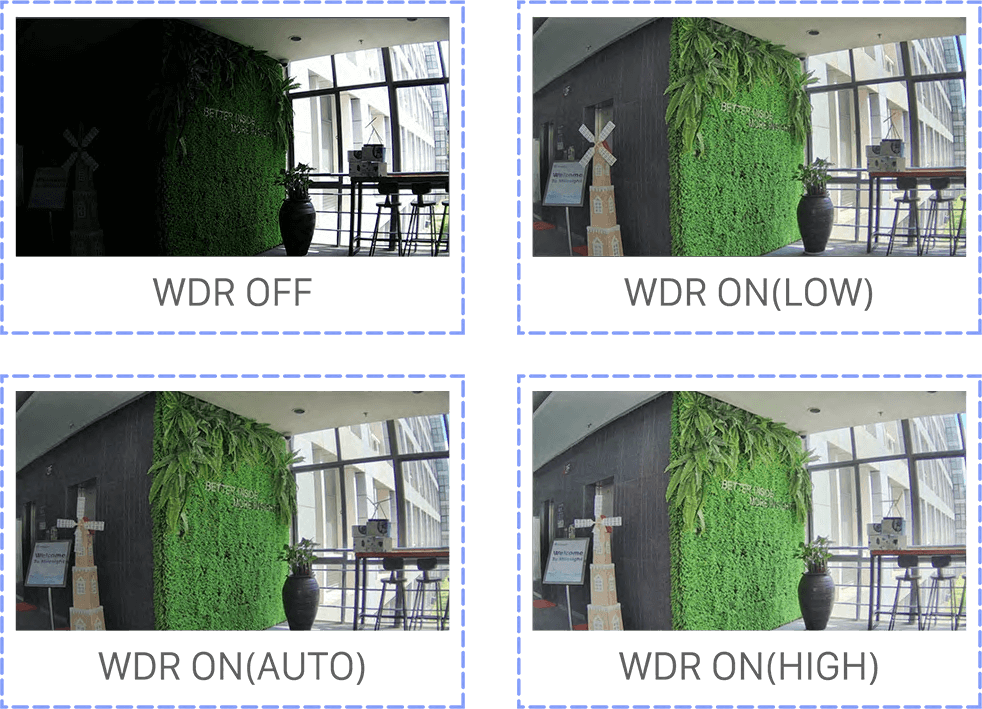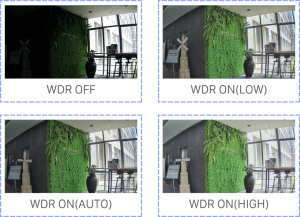What is WDR (Wide Dynamic Range) for CCTV cameras
Before buying a CCTV camera, you need to make sure it is good enough for your application and sometimes the WDR cameras have the technology you need.
But first it's important to understand how this technology works and that's where I can help you because in this article I answer the question "what is WDR?"
(The concept is explained for the CCTV cameras).
WDR stands for Wide Dynamic Range, is a technology used on video cameras to compensate problems with light exposure. It can work on the dark and bright areas on the image and create a balance to improve the overall image quality.
How WDR works
When pointing a CCTV camera to an entrance, door or a window, you can notice parts of the image with an excess of light and other parts that are too dark, to obtain a better image, the camera must compensate for this kind of situation.
You can see in the window the excess of light with very bright areas, whereas in certain inner regions there are dark areas.
Through the use of the WDR, it is possible to compensate for these different areas and to balance them.
This operation to compensate the light is done by the camera shutter.
WDR technology works by using different camera shutter speeds which allow more or less light gets into the camera thus controlling the exposure of the sensor to the light that is coming from the environment.
To use the WDR feature the camera shutter works as follows:
1. Uses higher speed to expose the sensor to light for a short period of time.
2. Uses lower speed to expose the sensor to light for a longer period of time.
3. Merge both captured images with different light exposure
The WDR in action
By activating the WDR on the camera, the shutter will automatically exposure the camera to light twice and merge the pictures for a better result.
In the first picture, it is possible to see more indoor details while in the second picture you see the opposite effect with more outdoor details.
In the merged image it is possible to see indoor and outdoor details from the combination of both light exposures performed by the camera with the WDR.
Due to the fact that this feature has to merge two images into a third one. The use of camera processing is intense and so it is a technology that costs more.
The WDR cameras
This variation between the darkest and brightest areas is the dynamic range, and the greater the camera's ability to vary smoothly from one area to another, the more efficient it will be. You can find this information in the product catalog described in decibels (dB). The higher the better.
Below is an example of the WDR information from a camera's catalog.
The True WDR and Digital WDR cameras
Be very careful when comparing the differences between cameras, because some small details make a great difference in the quality of the footage.
On the market you can find two types of WDR cameras:
1. True WDR cameras that work with the shutter speed technique.
2. Digital WDR (DWDR) cameras which work with a software compensation technique.
True WDR cameras work by capturing two images with different exposures to light and merging them into a third one, and therefore works more intensely but also more efficiently, whereas the digital WDR works only with one image to make a digital exposure compensation.
A camera configured to work with 30FPS, using True WDR will capture twice the frames (60) to deliver the final image.
A camera configured to work with 30FPS, using Digital WDR (DWDR)captures the same amount of frames (30) to deliver the final image.
Conclusion: cameras with True WDR are better but require more processing power and extra components, thus they are also more expensive.
WDR cameras catalog
Before buying your camera, just take a look at the catalog to make sure you get what you really want. Sometimes the Digital WDR (DWDR) cameras are enough to generate the image quality you need, but sometimes the True WDR is what you need.
See below an example of WDR described in the camera catalog.
The best WDR cameras
As explained before, the idea of the True WDR cameras is to use more than one image with different exposition to light and combine them to get a better image, but this doesn't mean its mandatory to use only two images.
In the market, you can find professional (and expensive) WDR cameras that use up to four images with different exposition to light to get a really good final image.
Some of the Milesight, Sony, Hikvision, Dahua Cameras work with such WDR technology.
Conclusion
You need to understand what is the type of application for your CCTV camera before going shopping. WDR cameras can be more expensive, especially if you are investing in professional models with the True WDR technology.
Want to become a better professional ?
If you want to become a professional CCTV installer or designer, attend one of our training. To book for one of the class click on the link below:
https://salcomtechnologies.com/cctv-ip-security-surveillance/




